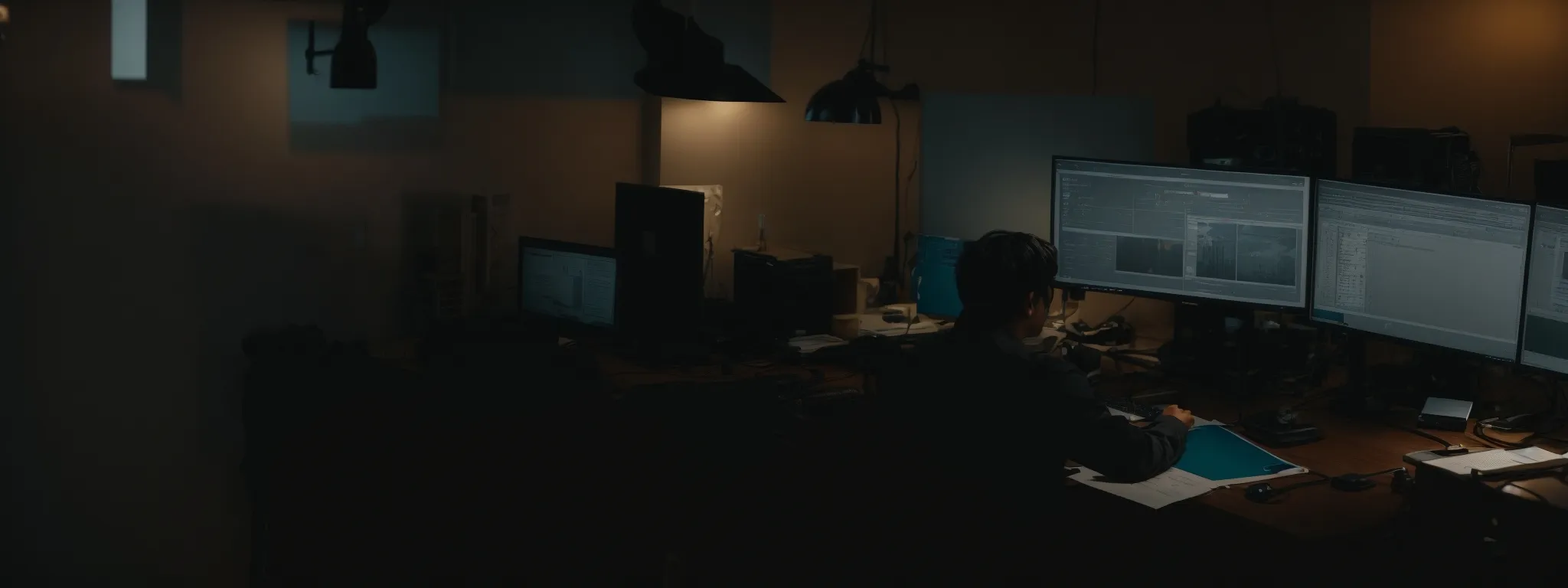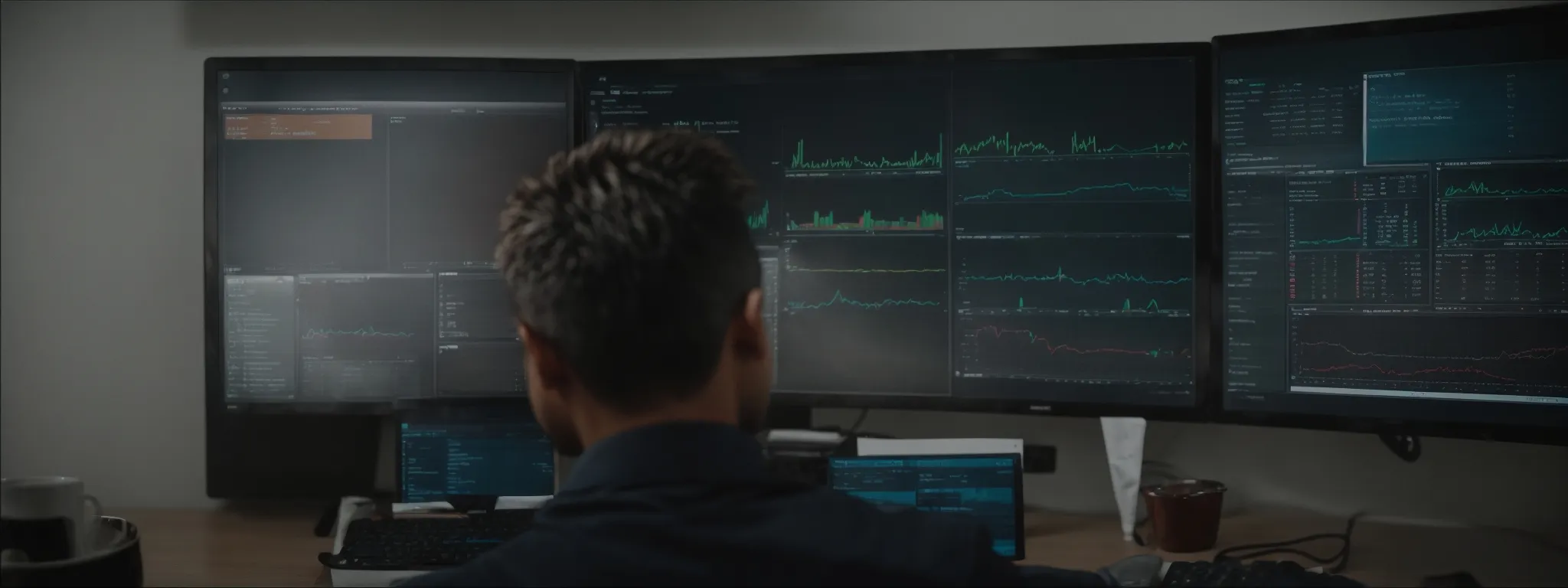Optimize Images for Better SEO Performance
The Ultimate Guide to SEO Image Optimization Images are not mere visual elements that add aesthetic value to a webpage; they are potent tools that, when optimized, […]
The Ultimate Guide to SEO Image Optimization
Images are not mere visual elements that add aesthetic value to a webpage; they are potent tools that, when optimized, significantly bolster search engine rankings and enhance user engagement.
This comprehensive guide unravels the intricacies of SEO image optimization, from selecting the best file types and image formats to the fine-tuning of file names and alt tags that speak directly to search engines.
As mobile responsiveness becomes indispensable and page speed a ranking factor, understanding the nuances of image SEO emerges as a game-changer for any content strategy.
For brands intent on solidifying their digital presence, mastering these facets is non-negotiable.
Keep reading to delve into proven techniques and best practices that will turn your website’s images into stalwarts of your SEO efforts.
Key Takeaways
- Image Optimization Significantly Impacts SEO Rankings and User Engagement
- Original Visuals Enhance a Website’s Authenticity and Can Lead to Better SEO Performance
- Including Structured Data, Such as JSON-LD Scripting, Boosts Image Visibility in Search Results
- Creating and Submitting an XML Image Sitemap Is Essential for Efficient Search Engine Indexing
- Responsiveness Across Devices Is Crucial for Image SEO and Overall User Experience
Understanding the Essentials of Image Optimization

In the realm of digital marketing, the strategic deployment of visuals is more than an aesthetic consideration; it’s a pivotal component of Search Engine Optimization (SEO) that directly influences a site’s visibility and user interaction.
SEO Image Optimization refers to the meticulous process of tailoring image attributes in a manner that supports search engines’ ability to discern and index the content effectively.
Mastery in this domain ensures that images not only garnish web pages but also serve as powerful conduits for enhancing search result standings and refining user experience.
As a cornerstone of SEO strategy, LinkGraph introduces advanced methodologies within its comprehensive SEO services to ensure that every image contributes to the robust performance and heightened accessibility of your digital assets.
Defining SEO Image Optimization
SEO Image Optimization is the meticulous calibration of images to meet both technical and user-centric criteria set forth by search engines. It encompasses a series of steps designed to adjust image format, size, naming conventions, alt text, and other vital elements that make images more digestible for search algorithms and enhances their contribution to the page’s SEO value.
This optimization not only elevates a web page’s relevance and authority in the eyes of a search engine but also bolsters the user’s visual experience. By employing optimized images, businesses can improve their site speed, engagement metrics, and ultimately, their rankings in SERPs:
- Altering the image file size to quicken page load times and aid in web performance
- Opting for the correct image file type to balance quality and efficiency, such as the widely-used JPG format or the compact and speedy WebP
- Implementing descriptive, keyword-enhanced image file names to increase relevance for target keywords
- Applying alt attributes that accurately describe the image content, assisting screen readers and image search results
- Strategically employing CDNs to distribute image content quickly and reliably across devices
The Role of Images in SEO
Images play a crucial role in bolstering the SEO framework of any online entity; they are not mere visual enhancers but pivotal gears in the mechanics of search engine algorithms. Carefully optimized images can act as magnets for search engines, pulling them towards a web page, enhancing its relevance, and consequently, its position on search result pages.
Moreover, strategically selected and optimized images pave the way for enriched user engagement. They build a visual hierarchy that guides site visitors, retains their attention, and communicates a brand’s story with immediacy and impact: characteristics that search engines deem as significant for a positive user experience.
| SEO Factor | Image Optimization Impact |
|---|---|
| Page Relevance | Boosted with keyword-rich file names and alt text |
| User Engagement | Increased through compelling, high-quality visuals |
| Load Times | Minimized with proper image compression and file size management |
| Accessibility | Enhanced for screen readers via descriptive alt attributes |
| Search Rankings | Improved with images that support content strategy and user intent |
Impact of Optimized Images on User Experience
Optimized images can significantly lift the overall satisfaction of users as they navigate a website. They ensure that the visual elements load swiftly and appear crisp, which keeps users engaged and reduces bounce rates.
Additionally, when images are deftly optimized with relevant alt text and file names, the inclusivity for a broader audience, including those who rely on assistive technologies, is magnificently enhanced, contributing to a universally positive user experience.
Selecting the Right Image Format for SEO

In a landscape where digital visuality intersects with SEO efficacy, the astute selection of image formats stands as a critical decision for content creators and webmasters.
The journey of optimization extends beyond the confines of resolutions and aesthetic, delving deeply into the comparative merits of JPEG, PNG, and WebP.
These file types each possess unique capabilities that can dramatically alter a website’s performance under varying conditions.
In addition, emerging contenders like AVIF promise enhancements in compression and quality, signaling a new era in image optimization.
This guide illuminates the pathway to discerning the optimal image format, fine-tuning the balance between visual fidelity and SEO proficiency.
Comparing JPEG, PNG, and WebP
When weighing the merits of JPEG, PNG, and WebP formats, one must account for the varying SEO advantages these image types offer. JPEGs, renowned for their compression capabilities, are often the go-to for balancing quality and file size, making them a staple for enhancing site speed without a substantial sacrifice in image clarity.
In contrast, PNGs stand apart with their support for transparency and higher-quality graphics, a choice that’s particularly beneficial for web design elements requiring crisp lines and details. WebP format, a relatively new player in the arena, presents itself as a potent alternative, boasting superior compression and quality characteristics that often outperform its JPEG and PNG counterparts.
Deciding on the Best Format for the Situation
The decision to select an image format should hinge on a thorough evaluation of the specific needs a website entails. For dynamic images meant to capture the intricacies of product details, PNGs may be ideal, whereas webmasters striving for optimum page speed might favor the compressed benefits offered by WebP or JPEG formats.
LinkGraph’s Search Atlas SEO toolkit extends its proficiency by including an image SEO optimizer, guiding users to make informed decisions tailored to their content’s unique demands. This translated into practice means that each image is not just a visual element but a fine-tuned detail in a broader SEO strategy, contributing to a website’s search engine rankings and user engagement levels.
Exploring Newer Formats Like AVIF
As the digital landscape evolves, so do the options for image formats, with AVIF emerging as a groundbreaking contender in the realm of SEO image optimization. Developed by the Alliance for Open Media, AVIF stands for AV1 Image File Format and is engineered to deliver exceptional compression without compromising on quality, potentially revolutionizing the way images are displayed on the internet.
LinkGraph recognizes the potential impact of AVIF on SEO, given its reduced file sizes and enhanced image quality which contribute to faster page loads and better user experience. By integrating advanced support for AVIF within Search Atlas’s suite of SEO tools, LinkGraph positions its users at the cutting edge of SEO practices, ensuring their websites leverage the latest developments in image optimization to remain competitive in search engine rankings.
Mastering Image Resizing and Compression

Efficiency in SEO extends into the critical process of image resizing and compression—a task that demands precision to maintain quality while reducing file size.
With the implementation of sophisticated tools, webmasters can fine-tune their images to meet exacting standards, ensuring that every visual element is primed for optimal web performance.
As part of a well-rounded SEO strategy, balancing these technical aspects is vital, and when harnessed correctly, automation through plugins and scripts becomes a force multiplier, streamlining the process of making images internet-ready.
This guide encapsulates the essence of employing such tools and strategies to elevate the SEO prowess of your imagery.
Tools for Effective Image Resizing
When it comes to optimizing a website’s imagery, the utilization of adept image resizing tools is paramount. LinkGraph’s Search Atlas SEO toolkit embodies a suite of features that facilitate precise image resizing, enabling content creators to adjust visual content with an eye for both aesthetic refinement and SEO impact, while maintaining the integrity of the image quality.
Equipped with advanced algorithms, these tools empower users to strike the perfect balance between image dimensions and file scalability. An image that is correctly resized can drastically augment site speed and performance—a factor that serves as a critical SEO ranking parameter recognized by search engines.
Balancing Quality and File Size With Compression
LinkGraph’s Search Atlas amplifies the potency of image SEO by integrating compression technologies that harmonize the visual quality and file size. Image compression, when executed with expertise, significantly curtails loading times, a move that propels both search engine rankings and user satisfaction.
Compression algorithms are the unsung heroes underneath the sleek veneer of online imagery; they diligently work to minimize bandwidth, enhancing site speed while preserving image integrity. The process, a delicate balancing act, maintains a seamless user experience without compromising on the image’s detail and vibrancy, reaffirming LinkGraph’s commitment to technological excellence in SEO practices.
Automating Optimization With Plugins and Scripts
Embracing automation offers a transformative leap in SEO image optimization, with innovative plugins and scripts emerging as game-changers. LinkGraph’s suite of SEO services incorporates these tools, enabling the seamless optimization of images across entire websites, effectively shaving off precious seconds from load times and reinforcing their SEO stature.
Particularly, the utilization of such automation tools within the Search Atlas platform streamlines the often labor-intensive process of image resizing and compression. This automation ensures consistency in optimization practices, allowing businesses to maintain their focus on crafting engaging content and refining user experience without the manual overhead.
Crafting SEO-Friendly Image File Names

In the meticulous world of SEO, the importance of an image’s file name is often understated, yet it holds considerable weight in boosting a website’s visibility on search engines.
Image file names, when crafted with precision, can act as silent yet potent markers for search algorithms, informing not just the context of an image but also the page’s thematic relevance.
This segment of the guide unveils the strategic nuances behind incorporating keywords into file names, structuring them for clarity, and offers insight into the best practices for renaming existing images to align with SEO objectives.
It is within these subtle refinements that businesses can leverage the power of nomenclature to optimize their online presence successfully.
Incorporating Keywords Into File Names
LinkGraph’s meticulous approach to SEO underscores the significance of embedding target keywords into the file names of images. The practice acts as a beacon for search engines, signaling relevancy and context, thereby contributing to the nuanced tapestry of factors that influence search rankings.
Search Atlas tools are engineered to optimize the image naming process, ensuring that each visual asset on a website aligns with user search intent. By infusing file names with carefully researched keywords, these tools enhance the image’s visibility and fortify its role in a comprehensive Content Strategy.
Structuring File Names for Clarity and SEO
Strategically structuring image file names with both user and search engine comprehension in mind is a pursuit of clarity that LinkGraph champions within its SEO services. This initiative entails constructing file names that are succinct yet descriptive, transcending beyond the mere incorporation of keywords to foster an intuitive understanding of an image’s content and context.
Equipped with Search Atlas, LinkGraph enables its clients to transform image nomenclature into a finely-tuned aspect of their SEO arsenal. Crafted with precision, these file names contribute to search result relevance and facilitate ease of indexing, propelling a website’s images to serve as effective and searchable visual touchpoints within the digital landscape.
Best Practices for Renaming Existing Images
Renaming existing images is an exercise in precision that can yield substantial SEO gains when performed correctly. To achieve this, LinkGraph’s Search Atlas equips users with advanced functionalities, allowing the overhaul of image file names to include target keywords and a logical structure that resonates with both search engines and users alike.
Adhering to a streamlined process for renaming images ensures uniformity and search engine recognition, which can, in turn, lead to improved SERP placements. The following list outlines the steps necessary for efficiently renaming images:
- Review the current image names and identify inconsistencies or non-descriptive filenames.
- Analyze the content and context of the image to ascertain appropriate keywords and phrases.
- Rename each image file with clear, concise descriptors that reflect the subject matter and complement the overall SEO strategy.
- Update alt tags and any references to the images within web content to match the new file names.
LinkGraph’s Search Atlas provides users with an edge by ensuring that the renamed images align perfectly with the core topics and keywords identified in their comprehensive SEO strategies, solidifying their digital footprint and enhancing overall web presence.
Enhancing Visibility With Descriptive Alt Tags

At the heart of adept SEO Image Optimization lies the art of crafting descriptive alt tags that fulfill a dual purpose: bolstering accessibility while simultaneously enhancing SEO performance.
Alt tags serve as the narrative twin of an image, describing the visual content to search engines and users who may not be able to see the image itself, such as those using screen readers.
In this segment, readers will learn the subtleties of writing alt text that is both comprehensible and inclusive, discover strategies to incorporate SEO keywords without compromising the natural flow of information, and understand how to sidestep the pitfalls of over-optimization to maintain the integrity of their web content.
Writing Alt Text That Improves Accessibility
Alt tags represent a critical frontier in the outreach of inclusive digital content. By providing descriptive, accurate alt texts for images, LinkGraph ensures that every website caters to a broad audience, encompassing users who depend on assistive technologies to navigate and understand web content. This practice is integral to fostering an inclusive online ecosystem while enhancing SEO.
Through Search Atlas, LinkGraph champions the practice of embedding meaningful alt attributes that succinctly convey the essence of an image, aligning with the principles of web accessibility. This commitment to descriptive clarity not only aids screen readers but also informs search engines about the context of visual content, contributing to a more accessible and SEO-friendly web environment.
Strategies for Including SEO Keywords in Alt Tags
LinkGraph’s Search Atlas tool capitalizes on the notion that alt tags are not only a cornerstone of image accessibility but also a strategic position for keyword integration. Insights from the Search Atlas platform guide users in weaving target keywords into alt text judiciously, striking a balance between aiding search engines in deciphering image content and preserving the authenticity of the user experience.
Alt text becomes an art form when enriched with SEO keywords in a manner that feels organic and relevant to the image subject matter. Experts at LinkGraph underscore the importance of contextually appropriate keywords that fit seamlessly into alt descriptions, thereby avoiding keyword stuffing while bolstering the prospects of higher visibility in search results.
Avoiding Over-Optimization in Alt Text
LinkGraph’s comprehensive approach to SEO underscores the significance of moderated alt tag composition, ensuring descriptions enhance search engine understanding without tipping into excessive keyword use. The finesse in crafting alt tags lies in emphasizing context and clarity over a simplistic cramming of target keywords, which can trigger search engine algorithms to flag content as spammy, adversely impacting SEO efforts.
Professionals at LinkGraph advocate for an equilibrium where alt text sustains its primary function of image description, while also subtly incorporating relevant keywords for SEO benefits. This balanced practice protects against the pitfalls of over-optimization, safeguarding the website’s credibility and ensuring that alt descriptions contribute positively to the site’s overall search engine ranking strategy.
Ensuring Images Are Mobile-Friendly and Responsive

In the current digital age, optimizing images for a seamless mobile experience has become an imperative component of a sound SEO strategy.
Acknowledging the diversity of devices used to access the internet, it is vital for businesses to adjust images to accommodate different screen sizes, ensuring their online content is equally impactful and functional across all platforms.
The advent of srcset and sizes attributes provides the necessary tools for webmasters to create responsive visuals that adapt fluidly, while meticulous testing on various devices underscores a commitment to compatibility and quality.
This ensures that every user—regardless of their choice of technology—encounters a website that is visually optimized, designed to engage, and crafted to convert.
Adjusting Images for Different Screen Sizes
LinkGraph’s emphasis on SEO excellence extends to ensuring visual content retains its impact and functionality across a multitude of screen sizes. As the digital space becomes increasingly mobile-dominated, image optimization requires a responsive design approach that automatically adjusts visual elements to suit the varied display dimensions of smartphones, tablets, and desktop monitors.
Utilizing techniques inherent to LinkGraph’s SEO services, webmasters are encouraged to apply responsive image solutions that offer optimal viewing experiences. Implementing srcset attributes allows for the selection of appropriate image resolutions that correspond to the user’s device, ensuring crisp and clear visuals at any size:
| Device Type | Image Adaptation Strategy |
|---|---|
| Smartphones | Dynamic resizing for fast, clean display on small screens |
| Tablets | Intermediate sizing to balance detail and load efficiency |
| Desktops | Larger, higher-resolution images for expansive displays |
Implementing Srcset and Sizes Attributes
Central to the adaptive prowess of contemporary web design, the implementation of srcset and sizes attributes empowers websites with the capability to deliver images that are tailored to the myriad of devices perusing the internet. LinkGraph harnesses these HTML5 specifications within its suite of SEO services, catalyzing the creation of responsive digital environments that intuitively serve optimal image versions based on user device parameters.
The finesse of integrating these attributes into an image’s HTML code lies in defining a set of potential image sources alongside their respective sizes. This is encapsulated in a straightforward markup language that the browser interprets to deliver the most appropriate image file:
- Delineate multiple source files for different screen resolutions
- Allocate the correct size descriptor to inform browser decision-making
- Maintain a seamless visual narrative across device landscapes
Seamless visual continuity across devices enhances the user experience, a facet that lies at the heart of LinkGraph’s pursuit for exhaustive SEO optimization. Embracing this technology fortifies web presence, ensuring images are a bastion of engagement, no matter the viewing context.
Testing Images on Various Devices for Compatibility
LinkGraph’s dedication to peak SEO performance encompasses a meticulous testing regime that ensures images retain their intended impact, irrespective of device. This involves subjecting visual elements to rigorous examination on a variety of platforms to ascertain their adaptability and functionality, guaranteeing that users are met with seamless visual content that enhances engagement and supports ranking potential.
Professionals within the Search Atlas framework engage in thorough testing, scrutinizing how visuals integrate across different operating systems and resolutions. Such due diligence in the optimization process identifies any compatibility issues, empowering businesses to proactively refine their image strategy, ensuring an efficient and universally positive user experience.
Optimizing Image Titles for Better Indexing

In the unwavering quest for search engine prominence, the subtleties of SEO encompass far more than keyword density and backlink profiles; they delve into the nuanced art of image titling.
While often overshadowed by the technical aspects of file naming, the optimization of image titles functions as an often-missed opportunity to bolster SEO and cater to user curiosity.
This crucial trove of optimization engages both search engine crawlers and the users they serve, providing an additional layer of context that transcends file names to offer a narrative glimpse into the visual’s relevance.
As part of this ultimate guide, an exploration into the difference between image titles and file names, strategies for developing titles that captivate both search engines and visitors, and the critical practice of updating titles for website images will be discussed, all in service of fortifying a brand’s digital standing and visibility.
Difference Between Image Titles and File Names
Understanding the distinction between image titles and file names is critical to any SEO strategy that encompasses more than just keywords and links. While the file name serves as a primary beacon for search engines, informing them of the image’s content and context, the image title is often presented to the user, adding a layer of depth and narrative to the browsing experience.
An image title is utilized by browsers to display tooltip text when a user hovers over an image, thus offering an immediate snippet of information or context that complements the visual experience. In contrast, a file name is a fundamental sorting label that aids search engines in categorizing and indexing the image within the vast digital landscape:
- File names contribute to SEO by including target keywords that align with page content.
- Image titles provide users with insights into the image content, enhancing user engagement and accessibility.
Creating Compelling Titles for Search Engines and Users
In the art of digital storytelling, image titles are like succinct captions that captivate and inform. LinkGraph harnesses this narrative power, crafting titles that resonate with both the analytical algorithms of search engines and the inquisitive minds of users, thus bridging the gap between data-driven optimization and human curiosity.
Within this intricate dance of optimization, Search Atlas stands as a tool for forging connections, allowing webmasters to craft image titles that are as informative as they are engaging. By integrating targeted keywords with a touch of creativity, these titles beckon search engines with clarity while inviting users to explore the visual depth of a website’s content.
Updating Titles for Existing Website Images
Revitalizing the titles of existing website images can breathe new life into a brand’s digital presence, serving as a subtle yet impactful adjustment within the broader SEO campaign. LinkGraph provides strategic oversight, ensuring that revised titles are accurately reflected in the metadata, which improves indexing and encourages meaningful interactions between content and its audience.
Professionals at LinkGraph carefully curate this refresh process, updating image titles with precision to enhance their discoverability and relevance within the digital landscape. This process is meticulously designed to align with the evolving narrative of the brand and the ever-shifting nuances of search engine algorithms, thereby reinforcing the website’s authority and visibility in search results.
Incorporating Relevant Captions to Support SEO

In the intricate tapestry of SEO, the deft inclusion of captions is far from decorative; it is a calculated move to bolster the content’s narrative cohesion, making every image an integral chapter in the story of the brand.
LinkGraph’s commitment to comprehensive SEO extends to the optimization of captions – the textual companions of images that serve a dual function of context establishment and keyword enrichment.
This guide sheds light on how aligning captions with a well-articulated content strategy, embedding them with context-rich keywords, and strategically managing their placement and formatting can amplify SEO efforts, lending a subtle yet significant lift to a website’s search engine stature.
Aligning Captions With Content Strategy
In the meticulous architecture of SEO, captions emerge as strategic anchors, enhancing the resonance of images within the greater narrative of a brand’s content strategy. LinkGraph advocates the deliberate alignment of captions with overarching content themes, ensuring each image caption augments the keyword fabric while maintaining coherence with the textual storyline.
Images punctuated with well-integrated captions perform a dual role, satisfying search engine criteria while simultaneously guiding the user through the content’s intended message. LinkGraph’s seasoned SEO strategists excel in infusing captions with optimal keywords that naturally complement the subject matter, thus finessing the dual art of storytelling and SEO optimization.
Using Captions to Provide Context and Keywords
Within the craft of SEO image optimization, captions provide invaluable context that deepens understanding for both users and search engines. LinkGraph emphasizes the smart integration of captions with images, enriching them with SEO-rich keywords that root each visual in its proper digital context, steering clear of overused terms and instead selecting language that resonates with the intended audience.
Captions act as a conduit for nuanced storytelling, marrying visual impact with explanatory text that enhances the content’s reach and relevance. This strategic layering of context and keywords below the image is a tactful SEO play, deftly stitched into the narrative fabric of the page to organically complement the content and augment its value in search engine metrics:
- Nimbly interweaves essential keywords without disrupting narrative flow
- Fortifies context for images, reinforcing topic relevance
- Contributes to image discoverability and user engagement
Caption Placement and Formatting for SEO Gains
Proper caption placement and formatting can exponentially enhance the accessibility of content while simultaneously boosting its potential for earning a favorable position in search results. LinkGraph’s expert use of Search Atlas Tools meticulously ensures that captions are not only perfectly positioned to draw the eye but are also formatted to promote SEO gains, leveraging every textual aspect for maximum search engine impact.
Adroit SEO practices embrace captions as integral elements, formatting them to function synergistically with both images and the surrounding content. Through LinkGraph’s strategic guidance, captions are deftly embedded in a way that bolsters context for images, augments keyword relevancy, and underpins the overarching narrative, all tailored to heighten a website’s visibility and resonance with users.
Leveraging Unique Images to Stand Out

In a digital marketplace saturated with imagery, the strategic inclusion of unique and original visuals serves as a power move for those seeking to carve out a niche in the competitive landscape of SEO rankings.
Unique images not only captivate the eye of the beholder but also resonate deeply with search engines that prize originality and quality.
As this guide delves into the discernible benefits of opting for custom visuals over ubiquitous stock photos, the emphasis will be placed on crafting images that exude high resolutions and aesthetic distinctiveness—assets that inherently bolster a website’s SEO standing and set the stage for enhanced user engagement and content efficacy.
Benefits of Using Original Images Over Stock Photos
In the dynamic ecosystem of SEO, opting for original images distinguishes a brand, signaling to search engines the presence of fresh, unique content that can enhance the site’s authenticity and authority. Unlike stock photos used by countless others, original visuals elevate a site’s narrative, providing tangible benefits in terms of SEO differentiation and user engagement.
Custom imagery reflects a business’s unique identity and stands as a testament to their commitment to quality and originality, fostering trust and fostering a deeper connection with site visitors. The use of original photos often results in higher click-through rates as they resonate more personally with viewers, direct reflections of the brand’s unique story and values.
- Heightened authenticity and authority signals to search algorithms
- Distinct brand narrative which enhances user engagement
- Trust-building through commitment to original, quality content
- Improved click-through rates due to personal resonance with viewers
Creating High-Quality Unique Images
Amid the competitive fray of digital content, the promise of unique high-quality images solidifies a compelling brand presence. LinkGraph’s proficiency in SEO strategy embraces the creation of custom visuals that are not only original but also exude high-resolution clarity—an endeavor that can radically elevate a website’s appeal and, by extension, its search engine positioning.
These bespoke visual interpretations go beyond mere aesthetics; they speak a language of authenticity and sophistication. By focusing on superior image quality and distinctive designs, LinkGraph ensures a brand’s visual narrative is both resonant and impactful, underpinning a robust SEO framework that is engineered to captivate users and search engines alike.
How Unique Images Can Improve SEO Rankings
In the quest for improved SEO rankings, unique images serve as valuable assets that enhance a website’s originality factor, a quality highly favored by search engines. The distinctive nature of these images reinforces a website’s content uniqueness, setting it apart from competitors and potentially increasing its authority in specific niches or topics, which can translate to higher rankings.
Unique visuals also foster increased user engagement, as they present novel stimuli that captivate and retain visitor attention more effectively than commonplace imagery. This heightened interaction signals to search engines the site’s value to users, thereby influencing its relevance and authority metrics, which are integral to boosting SEO standings.
Structuring Your Images With Structured Data

Unveiling the nuances of Structured Data in the context of SEO Image Optimization serves as a gateway to unlocking the full potential of visual content in digital marketing efforts.
This approach goes beyond conventional optimization techniques, embedding images with a layer of rich metadata that communicates directly with search engines.
In the subsequent discourse, the reader will be introduced to the various types of Structured Data pertinent to images, guided through the intricacies of implementation using the JSON-LD scripting language, and provided with strategic insights on verifying their structured data to ensure optimal Google visibility, rounding off an extensive blueprint designed for digital connoisseurs who aim to fortify their images as pivotal SEO assets.
Understanding the Types of Structured Data for Images
In the intricate dance of SEO, Structured Data for images unfolds like a silent yet potent language that speaks directly to the nuances of search engine algorithms. This form of metadata aids in providing explicit clues about the content of an image, paving the way for search engines to render rich and informative search results:
| Type of Structured Data | Role in SEO | Benefits |
|---|---|---|
| Schema.org Markup | Communicates image details to search engines | Enhances image visibility and search result accuracy |
| OpenGraph Tags | Optimizes images for social sharing | Improves engagement and click-through rates from social platforms |
| Twitter Cards | Displays images effectively in tweets | Expands reach and interaction on Twitter |
One critical component within this brocade of data snippets is the incorporation of the right type of Structured Data to ensure that the images are not only indexed accurately but also displayed compellingly across various online platforms. As businesses employ these structured annotations, they transform their visual assets into dynamic vectors that enhance discoverability and engagement in the digital space.
Implementing Structured Data Using JSON-LD
Employing JSON-LD for injecting Structured Data into a website’s images serves as a sophisticated means of communicating with search engines. This scripting of Linked Data, which LinkGraph adeptly leverages within its SEO strategies, enhances the semantic footprint of visual content, providing distinct clarity on the nature and context of the imagery they seek to optimize.
Through careful integration, JSON-LD empowers webmasters to furnish their images with meta-information that is readily processed by algorithms, thus accelerating indexation and improving the accuracy of search engine interpretations. LinkGraph’s commitment to cutting-edge SEO practices ensures that every client harnesses the benefits of JSON-LD to cultivate an online presence with robust optimization foundations.
Testing Structured Data for Google Visibility
Ensuring the visibility of images in Google’s search results hinges on the validity and effectiveness of the implemented Structured Data. The LinkGraph team rigorously tests these data points through Google’s Rich Results Test, an essential tool that confirms if a web page’s structured markup is correctly understood and ready to generate enhanced search results.
Upon identifying and rectifying any issues revealed during testing, LinkGraph ensures that images are primed to appear prominently within Google’s search features. This meticulous validation process is instrumental in elevating a website’s presence, making it more likely for images to appear in image packs and carousels, thereby capturing the attention of a broader audience:
- Verification via Google’s Rich Results Test to guarantee structured data integrity
- Amendment of identified discrepancies to fine-tune data effectiveness
- Strategic enhancement of image visibility within Google’s diversified search features
Utilizing Image Sitemaps to Aid in Image Discovery

In a digital ecosystem where visibility equates to value, a meticulously crafted sitemap acts as a beacon guiding search engines to a website’s visual offerings.
The discipline of SEO Image Optimization extends into the strategic development and deployment of XML image sitemaps—comprehensive directories designed to facilitate search engines in the discovery and indexing of images.
By integrating image sitemaps into their SEO infrastructure, businesses can significantly amplify their content’s visibility and ensure that each image garners the attention it deserves.
This section delves into the creation of XML image sitemaps, the incorporation of these sitemaps into robots.txt files, and the pivotal process of submitting them to search engines—crucial steps in maximizing a website’s image visibility.
Creating an XML Image Sitemap
In the dynamic landscape of search engine optimization, creating an XML image sitemap is a tactical endeavor that ensures a website’s visual content is systematically cataloged for search engines. A sitemap facilitates the efficient crawling and indexing of images, which can lead to improved visibility and quicker discoverability in search results.
LinkGraph’s strategic approach to SEO involves assisting clients in the meticulous compilation of an XML image sitemap: a structured map that includes URLs, titles, captions, and even geographic location of images when applicable. This detailed inventory serves as a guide for search engines to understand and index the images on a website effectively:
- Assemble essential image metadata alongside corresponding URLs into the sitemap.
- Ensure the inclusion of additional attributes such as image titles and license information to enhance indexing precision.
- Update the sitemap regularly to reflect new visual content and changes within the website’s image repository.
Adding Image Sitemap to robots.txt
The integration of an image sitemap into a website’s robots.txt file stands as a strategic measure to ensure seamless discoverability by search engines. LinkGraph advises clients on the insertion of a direct reference to the XML image sitemap within this text file, a method that signals to web crawlers the location of valuable image resources for effective indexing.
By guiding search engine crawlers towards the image sitemap via robots.txt, LinkGraph enhances the indexing efficiency of visual content. This pivotal addition acts as a digital compass, pointing algorithms to the intricate web of imagery that enriches the user experience and fortifies the SEO fortitude of a website’s visual narrative.
Submitting Your Image Sitemap to Search Engines
Finalizing the optimization process entails submitting the meticulously constructed image sitemap to search engines, a pivotal step that LinkGraph expertly navigates for its clients. This crucial submission signals search engines to review and index the documented images, enhancing the potential for boosted visibility in search listings and driving organic traffic to the website.
Once the image sitemap is prepared and incorporated into the robots.txt file, the next step is a submission to the appropriate search engine webmaster tools, such as Google Search Console. LinkGraph’s seasoned professionals guide this process, ensuring that the sitemap adheres to search engine guidelines and is successfully accepted:
- Access the search engine’s webmaster tools platform.
- Navigate to the sitemap section and submit the XML image sitemap URL.
- Monitor the submission status and any feedback provided by the search engine’s tools.
Frequently Asked Questions
What are the key factors to consider when optimizing images for SEO?
When optimizing images for SEO, significant factors include selecting the appropriate file format and file size to ensure quick page load times, and the adept use of alt tags to provide context for search engines and improve accessibility for users. A comprehensive Backlink Analysis, the deployment of a coherent content strategy, and leveraging tools such as LinkGraph’s Search Atlas software can enhance the impact of optimized images on a website’s search engine rankings.
Which image formats are best for SEO and how do they impact page loading speed?
Selecting the right image format is a balancing act between maintaining image quality and optimizing file size to foster swift page loading speeds; prevalent choices such as JPEG for photographs and WebP for robust image compression without notable quality loss stand out for SEO efficacy. Across the spectrum, smaller image file sizes contribute to faster page speeds, enhancing overall user experience, a critical component of search engine ranking algorithms.
How can image resizing and compression techniques improve website performance?
Implementing image resizing and compression techniques can markedly enhance website performance by reducing file sizes, thus expediting page load times and improving user experience. These methods also conserve bandwidth, contributing to increased site speed, a vital factor in both search engine rankings and maintaining visitor engagement.
Does the file name of an image affect its visibility in search engine rankings?
Yes, the file name of an image can impact its visibility in search engine rankings. LinkGraph’s SEO services emphasize the importance of descriptive, keyword-rich image file names to bolster relevance in search results.
Why is it important to include descriptive alt tags for images and how do they impact SEO?
Descriptive alt tags are paramount for image SEO as they facilitate search engines in understanding the content and context of images, which can enhance web page visibility in SERPs. They are also essential for improving web accessibility, aiding screen readers to convey the message of an image to visually impaired users, thus enhancing overall user experience and engagement.
Conclusion
“The Ultimate Guide to SEO Image Optimization” emphasizes the critical importance of refining visual content to bolster a website’s SEO and user experience.
By meticulously adjusting image attributes and leveraging advanced SEO strategies, businesses can ensure their images are swiftly indexed and highly visible in search listings.
The guide details strategic practices, such as selecting the right image format, resizing and compressing visuals, and crafting SEO-friendly file names and alt tags.
It also highlights the significance of incorporating unique images, ensuring mobile responsiveness, and employing structured data to communicate with search algorithms effectively.
Additionally, the guide underscores the value of creating XML image sitemaps for improved discoverability.
Overall, mastering the techniques in this guide is essential for any business to enhance their online presence through optimized images that attract search engines and captivate users.















































































